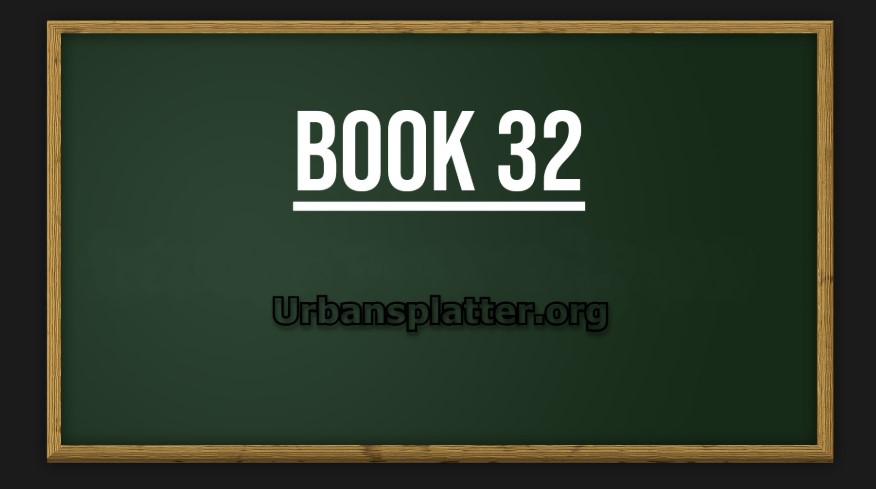Have you ever stumbled upon a blog that not only informed you but also captivated your attention from the get-go? Picture this: you’re immersed in a nostalgic web world powered by the Intel 865G Retroweb, and suddenly, you’re transported back in time. This guide explores how to write engaging content about this retro technology while standing out in the bustling digital landscape.
Understanding the Intel 865G Retroweb
Overview of Intel 865G Technology
The Intel 865G Retroweb chipset, released in 2004, was a game changer in its era. This technology supported advances in computer performance that web developers took advantage of. Remember the early days of web development? The Intel 865G made things smoother. It offered integrated graphics, improving user experience during web browsing and design.
Historical Significance in Web Development
What role did the Intel 865G play in shaping the web? It was significant. The period of the early 2000s saw a massive shift towards more dynamic online content. With the robust support from Intel 865G, developers could create richer web experiences. Think of animations, better graphics, and interactive elements. Can you imagine browsing the web without those today?
This technology was popular amongst computer users, contributing to its strong market share during its prime. Intel 865G was frequently one of the go-to choices for budget systems back then. This is because it balanced cost with performance remarkably well.
Comparison With Contemporary Technologies
How does the Intel 865G stack up against today’s technologies? Well, today’s advancements boast faster processing speeds and higher resolutions. However, the foundation laid by the Intel 865G Retroweb still echoes within modern technologies. Features like integrated graphics are now standard.
Despite its limitations, the Intel 865G’s legacy remains relevant. It paved the way for more advanced chipsets and web development practices. We’re using sophisticated technologies now, but the principles established by Intel 865G were crucial in that evolution.
The Influence on Modern Practices
“The Intel 865G reminds us how far we’ve come in technology, shaping the way we connect and interact online.” – Tech Historian
This quote captures the essence of the Intel 865G’s impact. Today’s web design continues to benefit from the groundwork it established. It highlighted the importance of performance and graphics in user engagement on websites.
Intel 865G Release Year and Market Significance
| Year | Significance |
| 2004 | High market share in the early 2000s |
SEO Strategies for Your Blog
When it comes to blogging, understanding SEO strategies can be a game-changer. You want your content to be found, right? Let’s explore some key aspects that can help you optimize your blog for search engines and reach your audience effectively.
1. Keyword Research: Finding the Right Keywords
Keyword research is crucial. Think of it as searching for treasure in a vast ocean. You need the right map.
- Identify what your audience is typing into search engines. Tools like Google Keyword Planner or Ubersuggest can help.
- Pick relevant keywords that align with your blog’s focus. It’s about quality over quantity. Choose a few relevant and strong keywords.
2. On-Page Optimization Techniques
Now that you have your keywords, it’s time to use them wisely. On-page SEO is like setting the table for a perfect dinner.
- Use your primary keyword in the title and the first 100 words of your blog post.
- Ensure to include it in headers and throughout your content. But avoid overstuffing that can hurt your SEO.
- Write engaging meta descriptions. This is your first chance to grab readers’ attention!
3. Link-Building Best Practices
Ever heard the saying “It’s not what you know, it’s who you know?” This rings true in the SEO world too.
- Link building involves getting links from other websites to yours. It adds credibility.
- Befriend other bloggers in your niche. Guest posting is a great way to get backlinks.
- Don’t forget internal links! They keep readers on your site longer and improve navigation.
User Intent: Why It Matters
Understanding user intent is essential. Are they looking to learn? Buy? Or just browse? Tailor your content to meet these needs it’s a direct path to better SEO. Think about it: Would you want to read a tech blog that talks about gardening?
“Effective SEO means understanding what your audience is searching for and delivering relevant content consistently.” – SEO Expert
Table: SEO Data
| SEO Factor | Value |
| Ideal Keyword Density | 1-2% |
| Average Blog Post Length for SEO | 2000 words |
Now you’re armed and ready with these essential SEO strategies. Use them wisely, and watch your blog soar.
Crafting Engaging Content
Creating engaging content is an art. It’s about connecting with your readers. One effective way to do this is through storytelling. Think about the last time you read a captivating story. What drew you in? Was it the characters, the setting, or maybe the conflict? Just like your favorite book, you want your audience to feel something.
1. Using Storytelling to Captivate Readers
Storytelling isn’t just for fiction writers. It’s a powerful tool for anyone trying to share ideas. When you weave a story into your content, it captures attention.
- Consider using anecdotes that resonate with your audience’s experiences.
- Mix personal stories with more formal information.
- Invite readers to visualize scenarios. Make them feel part of the narrative.
Have you ever noticed how a well-placed story can make complex ideas easier to digest? It’s almost like a map guiding readers through a dense forest of thoughts.
2. Incorporating Real-Life Examples
Nothing speaks louder than the real world. By incorporating real-life examples into your writing, you build credibility. You streamline complex information into relatable scenarios, making it easier for readers to connect.
For instance, when discussing the benefits of a new technology, share a specific case study. This not only illustrates your point but also enhances reader understanding. Imagine explaining a concept without a real-life situation. It would feel flat and disconnected.
3. Developing Unique Voices and Perspectives
Your unique voice is your signature. It’s what sets your content apart. Readers appreciate authenticity; it helps them relate on a deeper level. Embrace your quirks, your insights, and your viewpoints.
- Vary your writing style with short, punchy sentences.
- Don’t shy away from emotions. Include why certain events or topics matter to you.
- Encourage mixing various narrative styles to keep your audience engaged.
Remember: “Good writing transports readers; it’s like a time machine for the mind!” – Fiction Writer. Your goal is to make readers travel through your words.
Engagement metrics reveal a strong correlation between readability and social sharing. The easier your content is to read, the more likely it is to be shared. So, keep your sentences clear and concise.
As you write, don’t forget the human element. Authenticity is key! Whether you’re discussing the latest tech trends or a personal story, being genuine fosters a bond with your readers.
Finding Inspiration in the Past

Have you ever wondered how history shapes modern technology? The past is a rich source of inspiration. It isn’t just about remembering dates and events. Instead, it’s about understanding how those events created the technological landscape we navigate today. From the simplicity of early calculators to the complexity of today’s smartphones, the evolution is fascinating.
How History Shapes Modern Technology
When you look back, it’s clear that many modern technologies borrow ideas from historical innovations. Think about the first computers. They were enormous machines occupying entire rooms. Now, your smartphone has more computing power than those behemoths. That’s not just progress; it’s a reflection of how we learn and adapt from previous inventions.
- Renaissance creativity: The creativity seen during the Renaissance led to inventions that still influence today’s tech.
- Industrial Revolution: Innovations in manufacturing paved the way for modern automation and mass production.
- Telecommunication breakthroughs: The early telegraph set the stage for today’s instant communication.
Comparing Current Trends to Retro Technologies
Consider the current trends in technology. Retro themes are making a comeback. From cassette players to vintage-style clothing, nostalgia is everywhere. But why do we crave the past? It gives us a sense of comfort. According to a study, 60% of consumers feel positively about brands that evoke nostalgia. Brands are catching on, using vintage presentations to connect with audiences.
For instance, think about how gaming has evolved. Retro games have made a massive comeback. Indie games often mimic the pixels and sounds of the past, appealing to older players while introducing them to new gamers. It’s all about that connection.
Cultivating Creativity Through Nostalgia
Nostalgia isn’t just comforting; it’s creatively stimulating. When you reflect on the past, you often discover forgotten ideas that can inspire new projects. Consider an artist who draws inspiration from classic films. Their work might merge retro aesthetics with modern themes, creating something fresh yet familiar.
“History isn’t just a collection of dates it’s a tapestry of our current experiences woven together by technology.” – Cultural Anthropologist
This statement perfectly encapsulates how looking back can propel us forward. When you embrace nostalgia, you open the door to a world of creativity. Why not explore old ideas? You might find the spark you need for your next big project.
In conclusion, the influence of history on modern technology and creativity is profound. By understanding and appreciating the past, you can innovate and create in exciting new ways.
Technical Writing Tips for Clarity
Creating effective technical content can be a daunting task. The objective is to deliver accurate information while also engaging the reader. It’s crucial to strike a balance between technical detail and accessibility. Here are some tips to help you achieve clarity in your technical writing.
1. Balancing Technical Detail with Accessibility
When you write, think about your audience. Are they experts in the field or novices? It’s essential to tailor your language to the reader’s level of understanding. Use simple words whenever possible. If you must include complex terms, take a moment to explain them. For example:
- A widget might be a common term in your industry, but you can clarify its meaning by explaining it as a “small gadget or device used for a specific purpose.”
Ask yourself, “Is this something my audience can grasp?” If you have to pause and think, reconsider your wording.
2. Utilizing Visuals to Enhance Understanding
Visuals can significantly increase retention rates. Visual content increases retention rates by 65%. That’s substantial! So, use graphs, charts, and images strategically throughout your writing.
Think of visuals as supporting characters in your narrative. They should complement and clarify your text. For instance, if you are explaining a process, consider using a flowchart to illustrate the steps. This tactic makes it easier for readers to follow along. After all, who doesn’t find a good flowchart easier to understand than a wall of text?
3. Maintaining an Engaging Tone Throughout
Technical writing doesn’t have to be dull. Maintain an engaging tone. Directly addressing the reader using “you” can be effective. For example, say, “When you approach your next project, consider…” instead of a more passive phrasing.
Remember the quote,
“The challenge in tech writing is making complex ideas relatable and easy to grasp.” – Technical Writer
This encapsulates the aim of technical writing. Strive to simplify without losing the essence of your material.
In conclusion, employing these techniques can help balance technical details with accessibility. The goal is to create content that is not only informative but also engaging for your readers. With practice, your technical writing can become a bridge to a clearer understanding.
Final Thought: Future-Proofing Your Content
In the rapidly shifting digital landscape, future-proofing your content is essential. You may wonder, “How can I ensure that what I create today remains relevant tomorrow?” The answer is simpler than it sounds.
1. Adapting to Evolving Technologies
Technology is constantly changing. New platforms emerge, and trends shift like sand. To adapt, you must keep an eye on the latest advancements. Are you using the right tools for your content creation? A powerful content management system can save hours. Think about integrating AI tools or analytics to understand your audience better. It’s not just about creating content; it’s about creating the right content for your readers.
2. Embracing Change While Staying Relevant
Embracing change is crucial. Change can be daunting, but it opens doors too. When you adapt to new trends or user preferences, you stay relevant. Ask yourself: “What do my readers want now?” Stay connected with your audience. Surveys, feedback forms, or simply engaging in comments can provide valuable insights.
3. Continuous Learning and Skill Development
Are you investing time in your learning? Growth doesn’t stop with publishing your last article. Attend webinars, take online courses, or read industry blogs. Changing algorithms or audience preferences means you need to constantly evolve. Embrace the mindset of a lifelong learner.
- Follow industry leaders on social media.
- Join relevant online communities.
- Attend conferences, even virtual ones.
Regularly updating your skills can yield results. Data shows that blogs that keep their content fresh see a 30% increase in traffic. Isn’t that a compelling reason?
“To prepare for the future, we must be willing to evolve with it just like technology!” – Future Trends Expert
Resources for Further Learning
Looking for ways to keep up? Here are some resources to check out:
- Online Courses: Platforms like Coursera or Udemy offer everything from SEO to content strategy.
- Industry Blogs: Subscribe to sites like HubSpot or Content Marketing Institute.
- Podcasts: Tune into podcasts focused on digital marketing to gain new perspectives.
In a world where change is the only constant, being proactive is your best strategy. Keep adapting, learning, and engaging. Your content deserves it.
Conclusion: Bridging the Past and Present
As we draw the curtain on our exploration of the Intel 865G, it’s essential to reflect on its significance. The Intel 865G Retroweb isn’t just a relic of the past. It symbolizes a pivotal moment in the evolution of technology. This chipset laid the groundwork for many advancements that followed. Without its innovations, the pathway to today’s high-performance systems might have looked very different.
The Legacy of Intel 865G
Think about what it meant to have integrated graphics and a solid platform for early computing needs. The Intel 865G made powerful, yet accessible technology possible. It helped bridge the gap between casual users and tech enthusiasts. The impact of such innovations is often underestimated.
Encouragement to Write Authentically
As you embark on your writing journey, remember the importance of authenticity. Just like every piece of technology, your words carry a story. They reflect your voice, your thoughts, and your experiences. Don’t be afraid to share that. Authenticity resonates with readers. You don’t need to conform to trends or mimic styles. Write what feels genuine to you.
Exploring Further Resources
Curious to dive deeper? There’s a wealth of resources available. Whether you’re interested in the intricacies of technology, writing, or history, explore an array of articles, guides, and forums. Each resource offers a fresh lens through which to view the world. The journey of learning doesn’t end here. Explore the nuances of the Intel 865G Retroweb, or discover the art of blogging. The paths are endless.
“Every piece of tech tells a story, and it’s up to us to weave them into our narratives.” – Tech Blogger
In conclusion, the Intel 865G serves as a reminder of how far we’ve come and how much more there is to learn. Each detail from its history enriches our understanding of the tech landscape today. So, as you write and share your insights, remember that you too are a part of this narrative. Keep pushing boundaries, explore new topics, and never shy away from telling your story.















